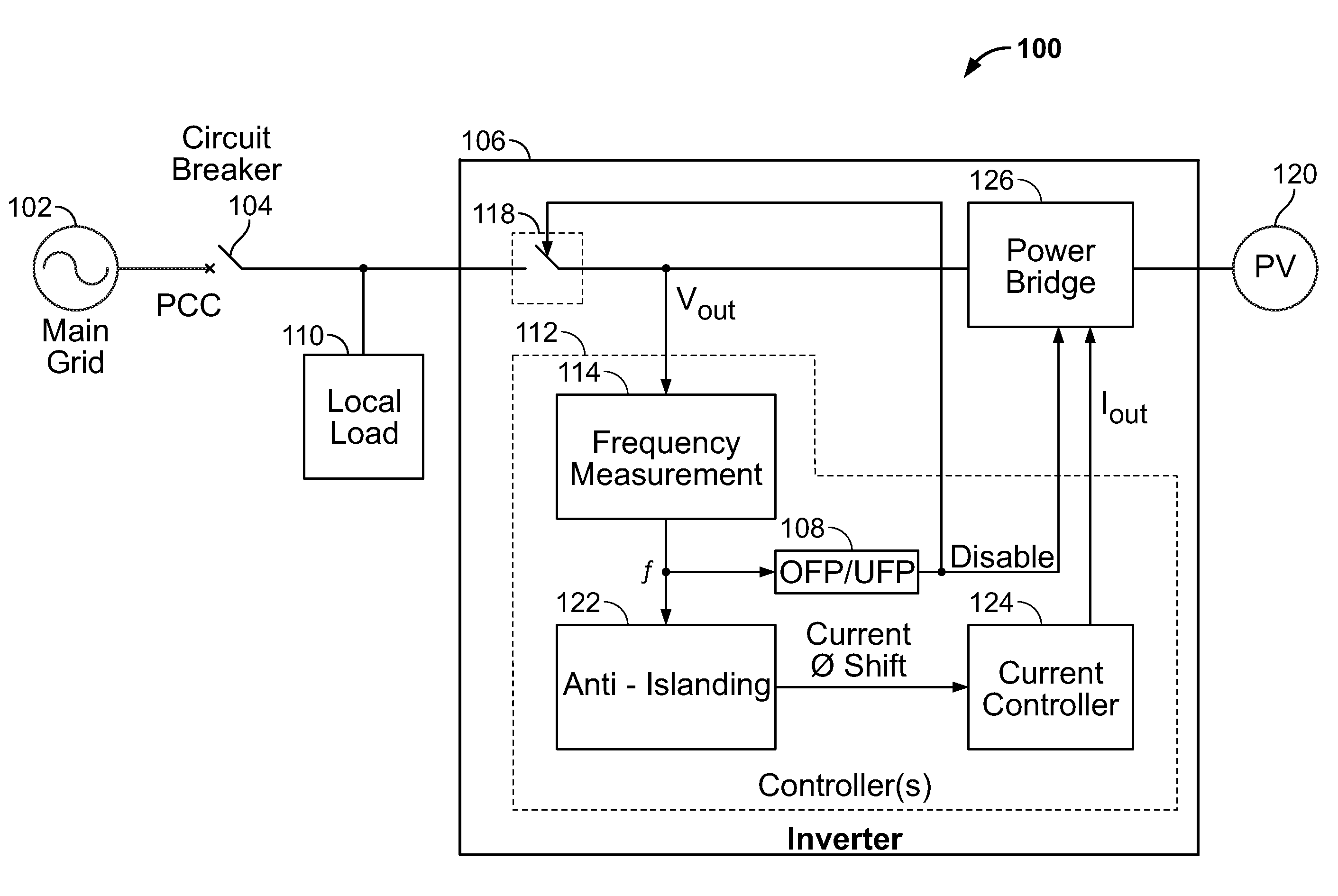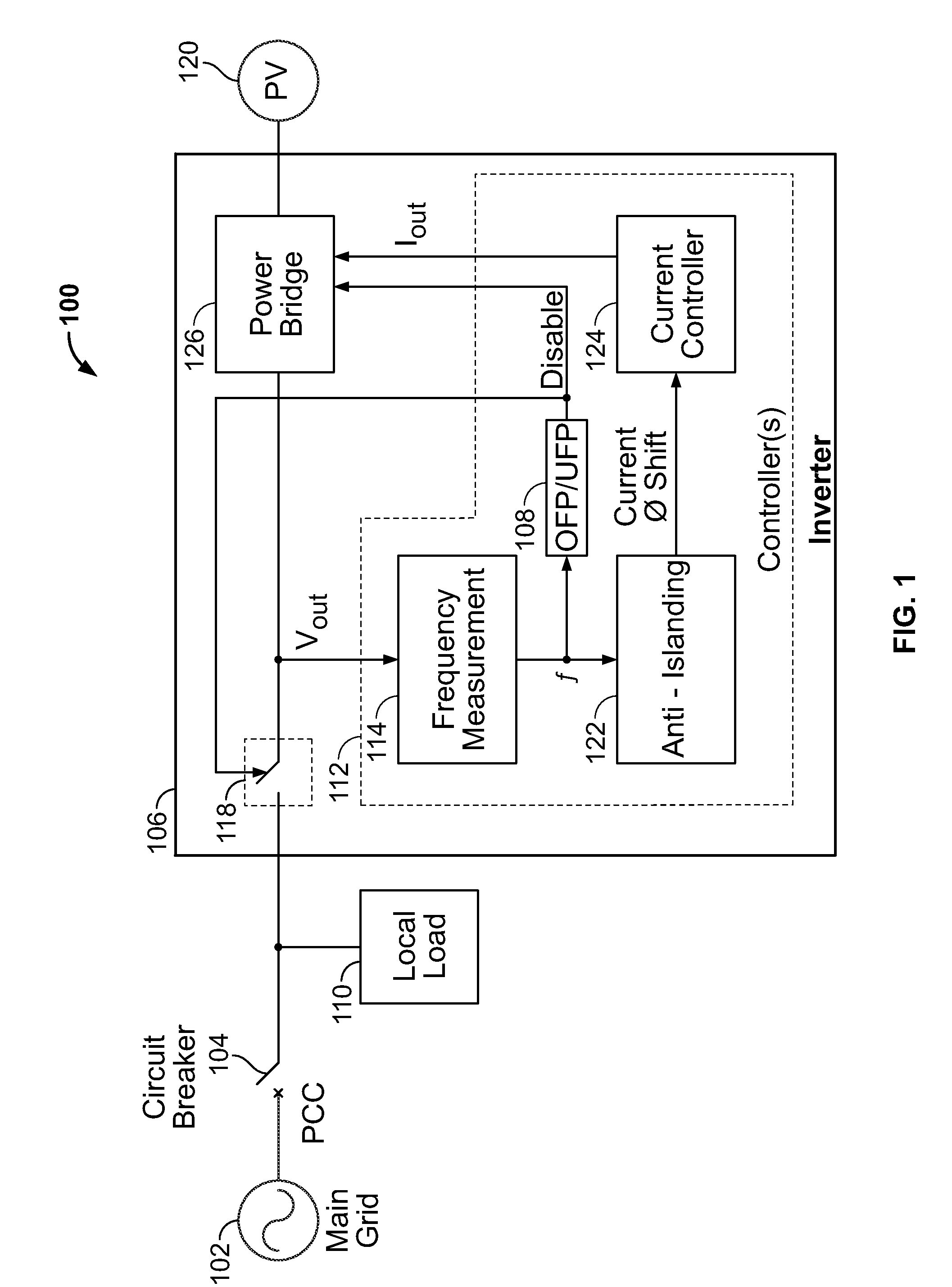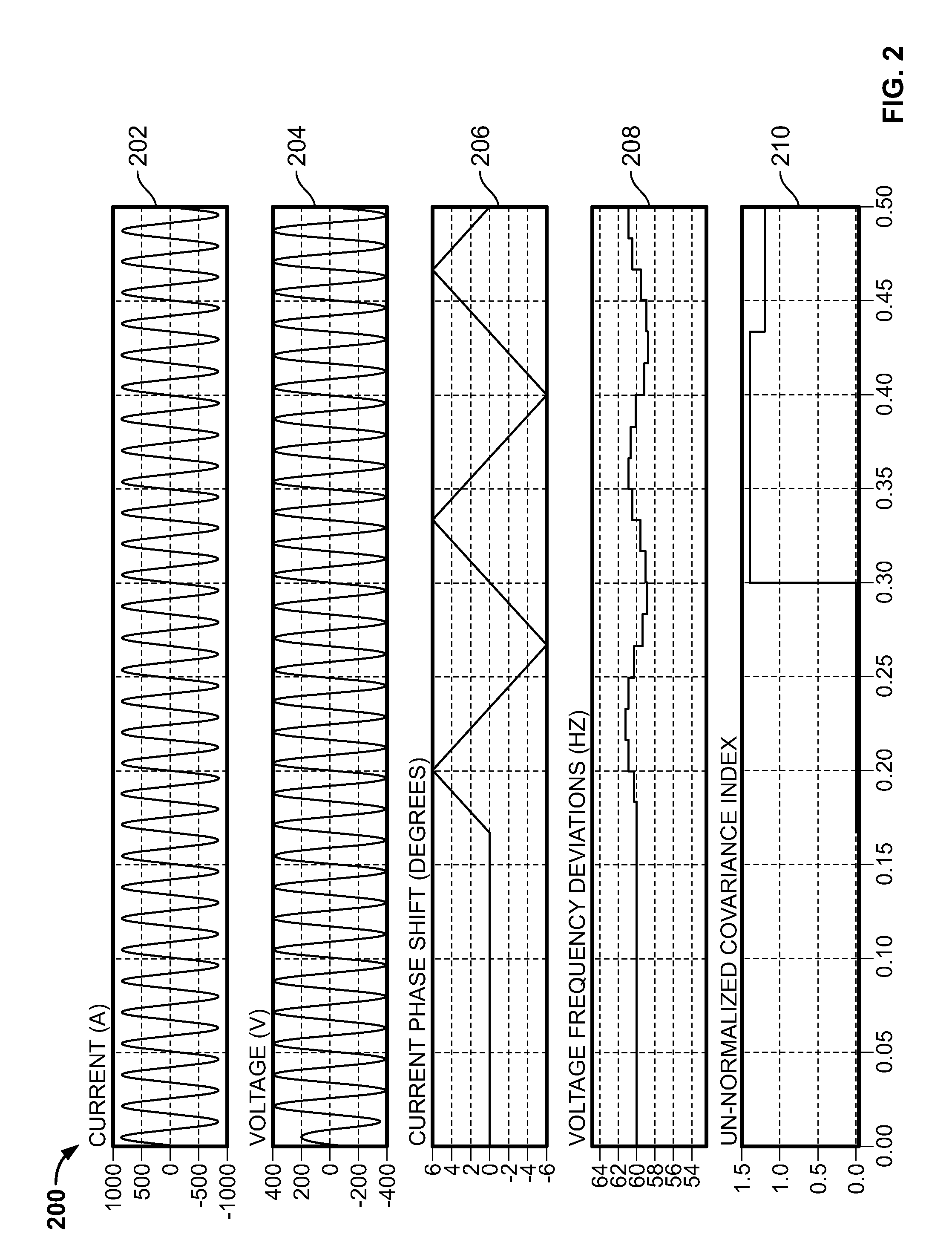Anti-islanding for grid-tie inverter using covariance estimation and logic decision maker
a grid-tie inverter and covariance estimation technology, applied in the direction of load balancing in the dc network, electric device, conversion with intermediate conversion to dc, etc., can solve the problem of electrical connection to the electrical grid being severed, safety hazards, frequency of output voltage deviation from nominal
- Summary
- Abstract
- Description
- Claims
- Application Information
AI Technical Summary
Benefits of technology
Problems solved by technology
Method used
Image
Examples
Embodiment Construction
[0017]Referring initially to FIG. 1, a grid-connected distribution generation (DG) system 100 is shown connected at a point of common connection (PCC) to a main electrical grid 102 via one or more circuit breakers 104. The DG system 100 includes an inverter 106 connected to a local load 110. The inverter 106 includes one or more controllers 112, which includes (a) a frequency measurement module (or frequency detector) 114, (b) an anti-islanding algorithm 122, and (c) a current controller 124, and a contactor 118 that electrically and / or mechanically disconnects a power bridge 126 from the load 110. The inverter 106 can be based on, for example, a GT500 kW-MV inverter available from Xantrex.
[0018]As is known, the DG system 100 can be in one of various configurations: a grid-connected configuration, an islanding configuration, or an anti-islanding configuration. In the grid-connected configuration, the circuit breaker 104 and the contactor 118 are closed, connecting the inverter 106 t...
PUM
 Login to View More
Login to View More Abstract
Description
Claims
Application Information
 Login to View More
Login to View More - R&D
- Intellectual Property
- Life Sciences
- Materials
- Tech Scout
- Unparalleled Data Quality
- Higher Quality Content
- 60% Fewer Hallucinations
Browse by: Latest US Patents, China's latest patents, Technical Efficacy Thesaurus, Application Domain, Technology Topic, Popular Technical Reports.
© 2025 PatSnap. All rights reserved.Legal|Privacy policy|Modern Slavery Act Transparency Statement|Sitemap|About US| Contact US: help@patsnap.com



